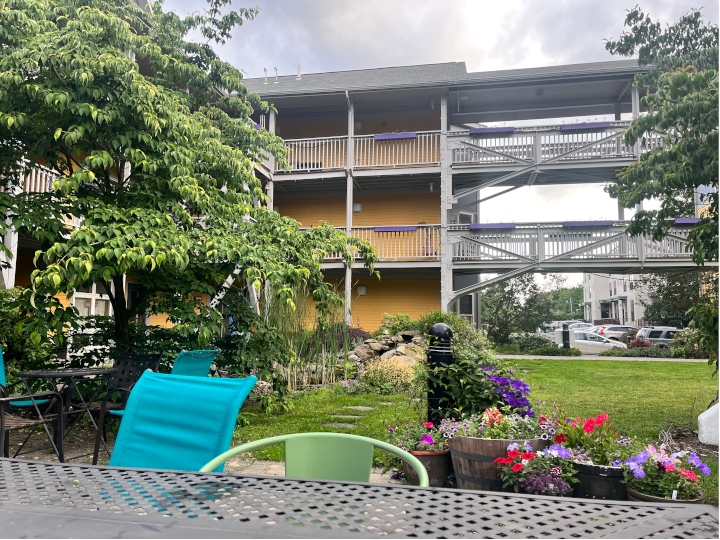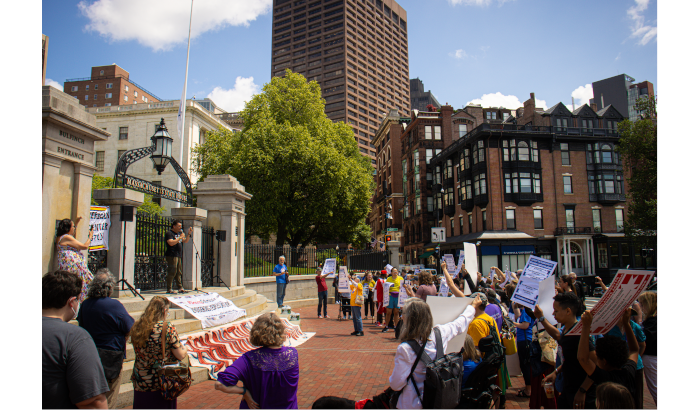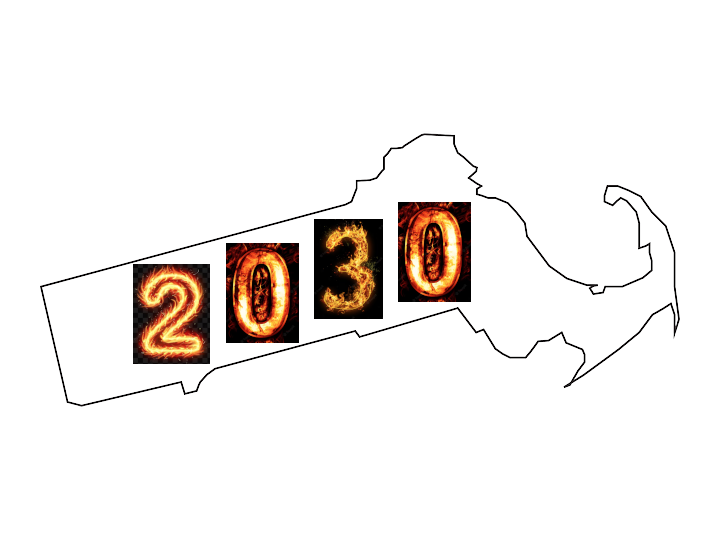An intentional community-based approach to housing
BOSTON – Nestled near the Jamaica Plain section of Southwest Corridor Park, an orange three-story apartment complex surrounds a vibrant courtyard. Each element deliberately and carefully chosen, the courtyard has a large patio, a children’s playset and a community garden.
Jamaica Plain Cohousing, founded in 1999, was intentionally designed to foster community among its nearly 60 owners. Each household has a private home and access to shared common areas.
“The idea is to build spaces that are conducive to people bumping into each other and interacting,” Founding Member David Goodman said. “In an age where the ideal seems to be the single family home where you don’t necessarily have too much contact with your neighbors, this is different.”
An intentional living community is “a group of people who have chosen to live together or share resources on the basis of common values” according to the Foundation for Intentional Community. Such groups include ecovillages, communes and student coops.
Trish Becker, executive director of the Cohousing Association of the United States, defined cohousing as an “intentionally designed neighborhood that combines extensive common facilities with private homes.”
“It’s a descriptive term that shows the intent of the developments to cultivate a strong sense of community,” she said.
Founding Member Patti Lautner said JP Cohousing is “designed architecturally for spontaneous social interaction.”
“If you live in a regular condo, the parking, mailbox and front door are designed to be as close as possible,” she said. “Here, the parking is on the periphery and the mailbox is in the common house. That’s designed purposefully so that you will knock into your neighbors everyday on your way home.”
Cohousing originated in Denmark in the 1960s and quickly started popping up in countries around the world. The communities were created because members wanted to productively and socially interact with one another, in comparison to the isolation encouraged to single-unit nuclear family housing
There are about 200 active cohousing communities across the US, and an additional 180 are in development.
All-in: Living in a Cohousing Community
JP Cohousing residents participate in common dinners and seasonal events throughout the year.
Nine-year old Noam Parker said “Cabin Fever Day” is his “favorite time of the year.”
“There’s a bunch of workshops during the day” including activities like “lego club” and “theater,” he said. The day concludes with a meal for all JP residents.
Wendy Patten, age nine, said her best friend lives in the neighborhood.
“Even if the day you had is really bad, at the end of the day you can come and play,” she said. “And it’s like nothing ever happened because you had a good end of the day.”
During the pandemic, Lautner said, JP Cohousing “developed a culture of coming outside for music” every morning and evening.
“A dance party twice a day was a way for us to check in on each other,” she said.
But since the onslaught of the pandemic, JP Cohousing has struggled to bring back community involvement.
“This community is very dependent on volunteerism to keep it working,” Lautner said. “I hope we can heal.”
Becker thinks the pandemic has made people more aware of “how our culture creates and maintains isolation.”
“If you look at the typical suburban neighborhood, the houses and the neighborhoods are designed for privacy as the number one priority,” she said. “I think more and more people are realizing that that’s not the healthiest way to live and they’re learning that we’re really meant to be together.”
Of the six Boston-area cohousing communities—mainly located in the Cambridge and Somerville area76 percent of respondents in a 2022 survey said they “hardly ever feel isolated from others,” according to a Cohousing Research Network study.
Cohousing communities make collective decisions through governing structures including “sociocracy”—which CohoUS, the Cohousing Association of the United States, defines as “a whole systems approach based on transparency, inclusivity, and accountability to maintain both effectiveness and harmony.”
JP Cohousing residents are required to dedicate four hours of service to the community each month and attend meetings discussing issues affecting the neighborhood through the consensus process—where all members need not wholeheartedly support a decision, but agree to go along with it.
Because of these internal governing structures, Becker said cohousing communities were “better prepared” to handle the “challenging conversations” brought on by the COVID-19 pandemic than other communities.
“While other workplaces and schools were all having really intense conflicts about safety of the collective, cohousing communities were ready for it,” she said. “Oftentimes they have a conflict resolution process that is already set up.”
Cohousing Affordability
Becker said there was an “increased interest [in cohousing] during and after COVID” which was “likely due to everyone’s experience of isolation and craving alternative ways of living.”
However, Becker said “economic accessibility” can serve as a barrier for potential new members which is the “greatest challenge” of the cohousing movement.
Some solutions include community land trusts (“a nonprofit corporation that holds land on behalf of a place-based community,” according to the Center for Community Land Trust Innovation) and rental models, she said.
Goodman said convincing people to buy into JP Cohousing was difficult because many buyers thought the shared living spaces would lower the cost. In reality, most units go for market price.
Still, 14 of JP’s 30 units are low and moderately priced based on the HUD guidelines for affordability in Boston.
Lautner said the JP community created an affordability fund by raising money internally which provided loans to low and middle income homebuyers.
“It’s a replicable model,” she said. “But it’s really about people investing in their own neighborhoods.”
The Future of Cohousing
Becker said the cohousing movement also struggles to establish diversity, with the majority of members being middle- and upper-class white and retired.
“I don’t think that the actual demographics are reflective of what the cohousing communities or the movement desires,” Becker said.
In response, Becker said CohoUS launched the Coalition for Racially Diverse Cohousing this year with the goal of making the cohousing movement more racially diverse.
Becker said she is seeing that younger generations are interested in this model because they are “looking for other options.”
“They’re experiencing isolation in their workplaces and in their lives,” she said.
The cohousing movement, Becker said, is in a “pivotal moment for reinvention.”
“We’re in this moment of redefining ourselves to be relevant for a younger generation to which I think includes more creative models [and] retrofit cohousing to make sure that we’re affordable as well as interesting and attractive to a younger generation.”
This article was produced for HorizonMass, the independent, student-driven, news outlet of the Boston Institute for Nonprofit Journalism, and is syndicated by BINJ’s MassWire news service.
Lindsay Shachnow is a HorizonMass reporter. She is a journalism student at Boston University and has a strong passion for social justice and data-driven storytelling. Lindsay is the co-campus editor for the Daily Free Press and has previously interned for BU Today and Gotham Gazette.





